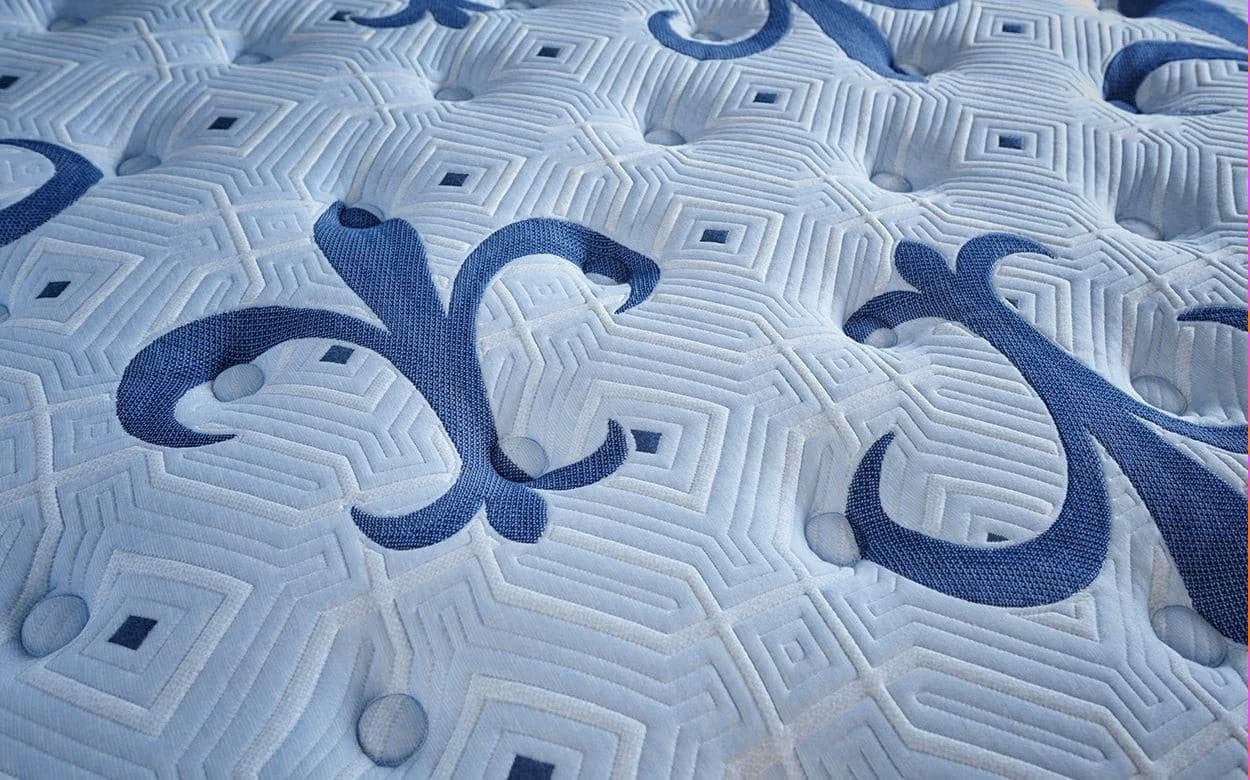Sleep is meant to be restorative but for millions of people, allergies turn bedtime into a struggle. Common allergens like dust mites, pet dander, mold spores, and pollen often hide in mattresses, leading to stuffy noses, itchy eyes, sneezing, and restless nights.
One practical solution is the use of a mattress cover (also called a mattress encasement). But do these covers actually work, or are they just another bedding accessory? Let’s dig deeper into the science, features, and real-life benefits.
Table of Contents
- Introduction
- Key Takeaways
- What Exactly Is a Mattress Cover?
- The Science Behind Allergies and Dust Mites
- Do Mattress Covers Really Help With Allergies?
- Features to Look For
- Mattress Cover vs. Mattress Protector vs. Mattress Pad
- Standard vs. Hypoallergenic Mattress Covers
- Protection vs. Comfort Balance in Mattress Covers
- Allergy-Friendly Mattress Cover Review
- Additional Tips to Minimize Allergens in the Bedroom
- Conclusion
- FAQs
Key Takeaways
- Mattress covers act as a barrier against dust mites, allergens, and pet dander.
- They can improve sleep quality for people with allergies, asthma, or sensitive skin.
- Not all covers are created equal hypoallergenic, waterproof, and breathable covers are the most effective.
- Studies show that dust mites thrive in warm, humid mattresses, and covers reduce exposure significantly.
- For best results, pair mattress covers with good sleep hygiene practices like washing bedding weekly and vacuuming your bedroom.
What Exactly Is a Mattress Cover?
A mattress cover is a removable fabric encasement that goes around your mattress, acting as a barrier between you and potential irritants inside the bed.
Common Types of Mattress Covers:
- Standard Mattress Protectors – basic protection against spills and stains.
- Hypoallergenic Covers – tightly woven fabric that blocks allergens.
- Waterproof Covers – guard against spills, sweat, and accidents.
- Zippered Encasements – cover the entire mattress for maximum protection.
The Science Behind Allergies and Dust Mites
Dust mites are one of the biggest triggers for nighttime allergies. These microscopic creatures thrive in warm, humid environments like mattresses, feeding on dead skin cells.
- A typical mattress can contain millions of dust mites after just a few years.
- Dust mite droppings contain proteins that trigger allergic reactions.
- Symptoms include: nasal congestion, watery eyes, coughing, wheezing, and even eczema flare-ups.
A mattress cover with allergen-blocking fabric prevents mites and allergens from accumulating where you sleep.
Do Mattress Covers Really Help With Allergies?
Yes but the effectiveness depends on the type of cover.
Studies show that zippered, allergen-proof mattress covers can significantly reduce allergen exposure. While they don’t eliminate allergens entirely, they create a barrier between the sleeper and dust mites.
- Immediate Relief: Many allergy sufferers report reduced nighttime congestion after switching to a high-quality cover.
- Long-Term Benefit: Prevents further buildup of allergens inside the mattress.
- Best Results: Combine with pillow protectors and regular cleaning.
Features to Look For in Allergy-Proof Mattress Covers
Not all mattress covers are equal. For maximum allergy protection, look for:
- Tightly Woven Fabric: Blocks microscopic allergens.
- Breathability: Keeps airflow comfortable without trapping heat.
- Waterproof Layer: Shields against spills, sweat, and bacteria.
- Full Encasement with Zipper: Seals the mattress completely.
- Hypoallergenic Certification: Verified for allergy sufferers.
Mattress Cover vs. Mattress Protector vs. Mattress Pad
|
Feature |
Mattress Cover (Encasement) |
Mattress Protector |
Mattress Pad |
|
Purpose |
Allergy barrier, full encasement |
Spill & stain protection |
Extra comfort & cushioning |
|
Coverage |
Entire mattress (zippered) |
Top + sides (fitted sheet style) |
Top layer only |
|
Best For |
Allergies, dust mites, bed bugs |
Everyday protection |
Added softness |
|
Price Range |
$$ – $$$ |
$ – $$ |
$ – $$ |
Comparison Table: Standard vs. Hypoallergenic Mattress Covers
|
Feature |
Standard Mattress Cover |
Hypoallergenic Mattress Cover |
|
Allergen Protection |
Minimal |
High (dust mites, pollen, dander) |
|
Breathability |
Moderate |
Enhanced |
|
Waterproof Option |
Sometimes |
Often included |
|
Basic |
Premium fabrics, long-lasting |
|
|
Best For |
General use |
Allergy/asthma sufferers |
Visual Graph: Protection vs. Comfort Balance in Mattress Covers
Here’s a simple representation of how different covers perform:

Product Spotlight: Allergy-Friendly Mattress Cover Review
Overview
One of the most recommended products for allergy sufferers is a hypoallergenic zippered mattress encasement. It provides 360° coverage to prevent dust mites and allergens from penetrating.
Key Features:
- 100% breathable cotton surface
- Zippered encasement for full mattress protection
- Waterproof yet soft (no crinkly noise)
- Machine washable for easy care
Pros & Cons
|
Pros |
Cons |
|
Strong protection against allergens |
Higher price than basic covers |
|
Needs regular washing |
|
|
Durable zipper design |
May take longer to install |
|
Waterproof for extra hygiene |
Bulkier than standard covers |
Additional Tips to Minimize Allergens in the Bedroom
Mattress covers are effective, but they’re not the only solution. Combine them with these steps for maximum relief:
- Wash bedding weekly in hot water (130°F/55°C).
- Vacuum carpets and upholstery frequently.
- Keep pets off the bed.
- Use an air purifier to reduce airborne allergens.
- Maintain low humidity (below 50%) to discourage dust mites.
Conclusion
Mattress covers absolutely help with allergies, but they’re most effective for:
- People with dust mite or pet dander allergies
- Households with asthma sufferers
- Parents of young children (waterproof covers prevent messes + allergens)
- Anyone looking to extend mattress life while improving sleep hygiene
If you want a healthier night’s sleep and fewer allergy symptoms, investing in a quality hypoallergenic mattress cover is worth it.
FAQs
1. Can mattress covers cure allergies?
No, they don’t cure allergies but help reduce exposure to allergens.
2. How often should I wash a mattress cover?
Every 1–2 months, or sooner if you have pets or severe allergies.
3. Are waterproof mattress covers breathable?
High-quality ones use breathable membranes, so they won’t trap heat.
4. Can mattress covers protect against bed bugs?
Yes, zippered encasement specifically designed for bed bugs can trap and block them.
5. Do mattress pads work the same as covers for allergies?
No, pads add comfort but don’t block allergens effectively.
6. Will I feel the mattress cover under my sheets?
Most modern covers are thin and soft, so you won’t notice them.
7. Can I use a mattress cover with a memory foam mattress?
Yes, as long as it’s breathable to avoid trapping heat.
8. Do hypoallergenic mattress covers make a difference for asthma?
Yes, they reduce triggers like dust mites that worsen asthma.
9. How long do mattress covers last?
Typically 3–5 years with regular washing and care.
10. Are mattress covers worth the investment?
Absolutely especially for those with allergies, asthma, or sensitive skin.


